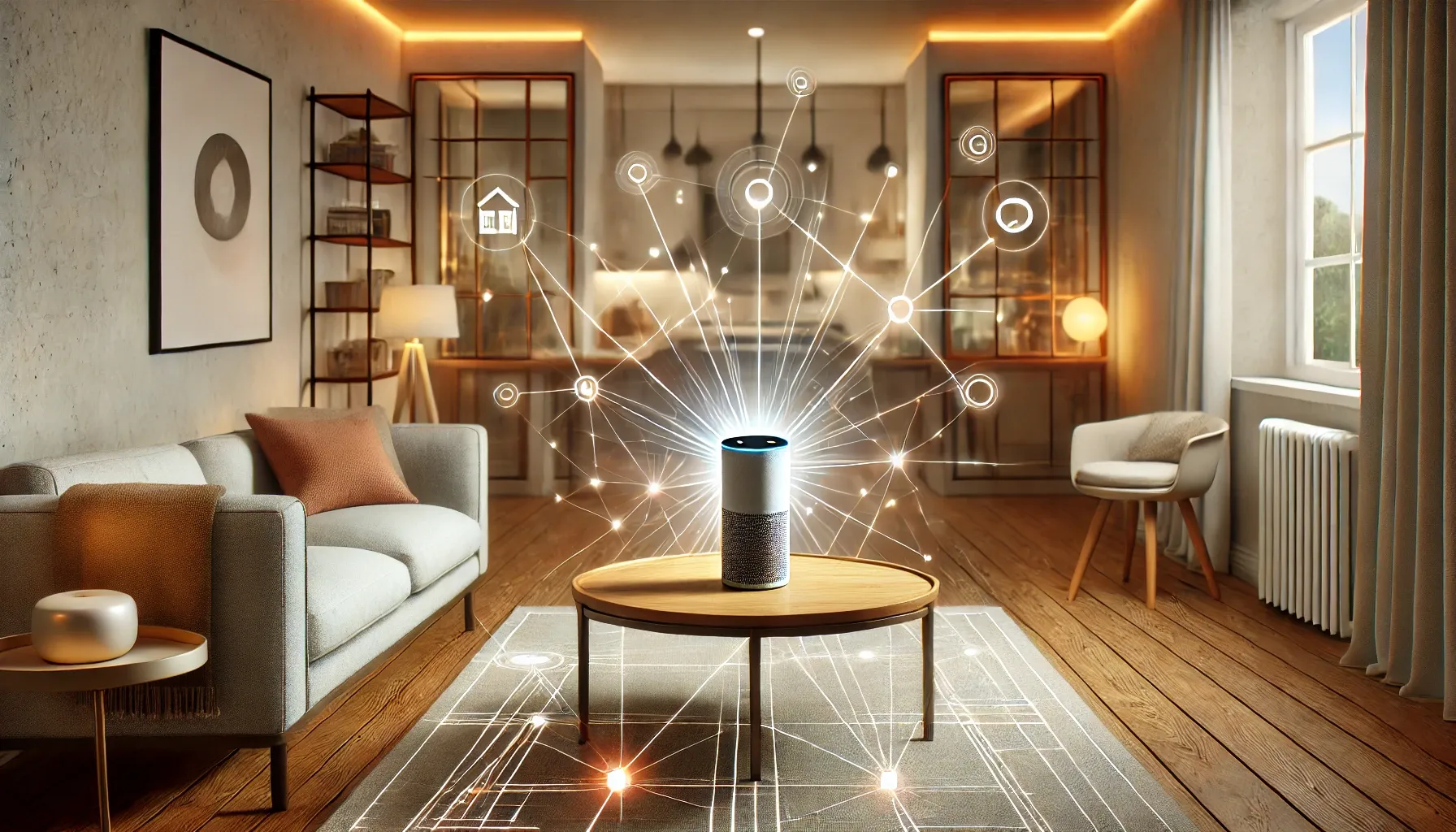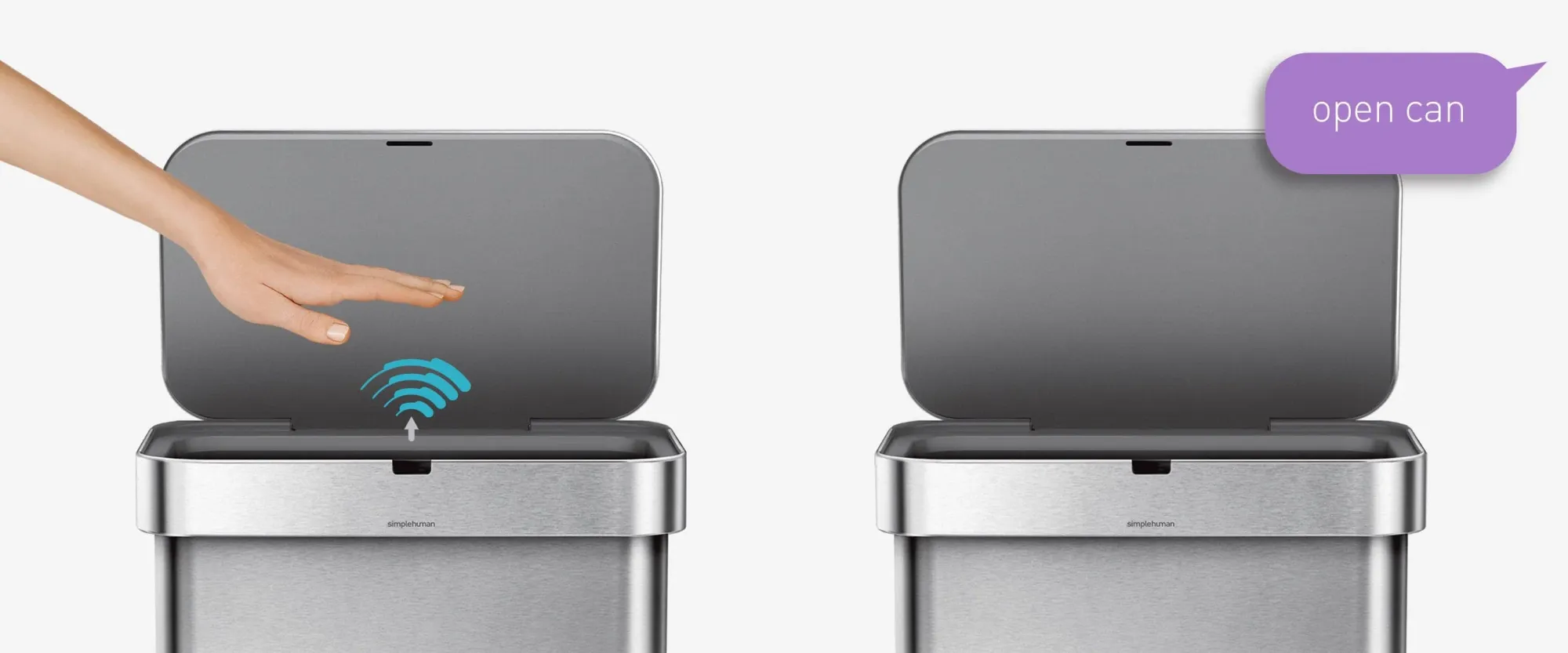Bringing Magic Home: Diving into Voice-Controlled Home Assistants
Discover the magic of voice-controlled home assistants. Elevate your smart home with the latest tech and integrated systems!

In recent years, voice-controlled home assistants have shifted from novelty gadgets to everyday essentials in countless homes. From dimming lights to playing music, they’ve redefined convenience and connected living. If you're ready to tap into this magical realm of smart tech, here’s everything you need to know, from basics to advanced configurations, to make the most of these digital wizards.
What is Voice Assistant Technology?
Voice assistants like Amazon Alexa, Apple Siri, and Google Assistant are your digital sidekicks, using voice recognition to respond to commands, control devices, and provide information in real time. With a simple “Hey Google” or “Alexa,” you unlock hands-free control of nearly every device in your home.
Key Features of Voice Assistants:
- Voice Commands: Control smart home devices, request music, check the weather, or even order groceries.
- Routine Automation: Create personalized routines that combine multiple actions with a single command.
- Connectivity: Seamlessly link devices from different brands, bringing everything under one command center.
- Integration with Other Services: Sync calendars, control third-party apps, and make hands-free calls or texts.
Understanding Voice-Controlled Systems
These systems integrate with a wide range of devices to give you control with minimal effort. But how does it work? Think of it as having a digital concierge that connects with your home's gadgets. Here’s a breakdown of their main components and features:
Core Components:
- Home Hub – Devices like Amazon Echo, Google Nest Hub, or Apple HomePod serve as the command center.
- Smart Devices – From lights to thermostats, each connected gadget in your home receives and executes commands.
- Command Trigger Words – Activating phrases like “Alexa,” “Hey Siri,” or “OK Google” cue the assistant to listen and respond.
Why Use Voice Assistants?
Voice assistants add value by saving time, boosting convenience, and making daily routines feel seamless and efficient. Here’s a look at why they’re worth integrating:
Benefits of Voice-Controlled Home Assistants:
- Enhanced Convenience: Adjust lighting, music, and even lock doors with a simple voice command.
- Energy Efficiency: Schedule lighting and heating to work only when needed, reducing energy waste.
- Improved Security: Use voice-activated security features like smart locks and cameras, adding an extra layer of safety.
- Hands-Free Control: Perfect for multitasking, whether you’re cooking or working, you stay productive without needing to touch your phone or tablet.
Privacy and Security Concerns
With great power comes great responsibility—or, in this case, privacy concerns. As useful as these assistants are, they do “listen” constantly for trigger phrases, which can make some users uneasy. Here’s how to keep your data secure while using voice assistants:
Privacy Tips:
- Turn Off the Mic: Many devices have a physical mic switch, letting you turn off listening when you want extra privacy.
- Review and Delete History: Regularly delete stored voice recordings to control the data these devices keep.
- Set Permissions: Customize privacy settings to limit the assistant’s access to your personal data and activity.
The Future of Voice-Activated Homes
Voice assistants have come a long way since Bell Laboratories’ “Audrey” in 1952, a device that could only recognize numbers. Today, they can control nearly every aspect of our homes. With the industry projected to manage over 8 billion devices by 2026, voice-controlled tech will only become more embedded in our lives, transforming homes into smart ecosystems.
Setting Up Your Voice-Controlled Smart Home
Imagine controlling your home with just your voice—turning lights on, adjusting the thermostat, and playing music with a simple command. Setting up a voice-controlled smart home can make life smoother and more convenient. In this guide, we’ll walk you through the essentials of getting started with top voice-activated devices, each designed to simplify everyday tasks and transform your space into a truly smart home.
Step-by-Step Setup:
- Choose Your Hub: Pick between Amazon Alexa, Google Assistant, or Apple HomeKit based on your device(s) ecosystem.
- Connect Compatible Devices: Link your smart lights, speakers, and other gadgets in the app associated with your assistant.
- Create Routines and Commands: Set up custom routines, like “Good Morning,” that automatically adjust lighting, play music, and start your coffee maker with a single command.
- Experiment with Voice Commands: Explore different commands to learn the assistant’s capabilities and add convenience to daily tasks.
Popular Voice-Controlled Home Devices
August Smart Lock Pro
I'm all about the August Smart Lock Pro when it comes to keeping my home secure and accessible. You can yell at Alexa, whisper to Apple's HomeKit, or holler at Google Assistant to lock or unlock your door—it’s like having your own personal butler! It’s clever enough to pop the lock open when I stroll up, hands full of groceries.
| Feature | Details |
|---|---|
| Compatibility | Alexa, Apple HomeKit, Google Assistant |
| Control | I love the remote and auto-unlock feature |
| Security | Strong encryption and a handy activity log |
Wanna know more about how smart locks fit into your home? Check out our article on home assistant integrations or our article on whether smart locks are safe.
Honeywell WiFi Smart Thermostat
Meet my climate commander—the Honeywell WiFi Smart Thermostat. It takes the guessing out of temperature control with its compatibility with Alexa and Google Assistant. It’s not just handy, it’s got tricks up its sleeve—like controlling humidity and letting you set up a schedule for the entire week.
| Feature | Details |
|---|---|
| Compatibility | Alexa, Google Assistant |
| Programming | I enjoy the 7-day schedule with those snazzy settings |
| Sensors | Built-in humidity sensor keeps things comfy |
Scoot on over to our home assistant devices page for a look at more wonders.
Simple Human Smart Trash Can
So, this isn't just any trash can—the Simple Human Smart Trash Can opens up with just a word. Imagine making dinner messes disappear into a bin that obeys your every command. No more sticky lids, it’s got the kitchen wrapped around its finger.
| Feature | Expected Details |
|---|---|
| Voice activation | Just say the word to raise the lid |
| Compatibility | Often buddies with Alexa |
| Use Case | Fantastic for a hands-free kitchen experience |

LG Nano75 NanoCell Series 65-Inch TV
Now, let’s talk big screens. My LG Nano75 NanoCell Series 65-inch TV makes movie nights and lazy Sundays something to talk about—literally! With Alexa in the mix, I can change channels, adjust the volume and cheerfully browse the internet just by talking to it.
| Feature | Details |
|---|---|
| Compatibility | Alexa |
| Functions | Change channels, adjust sound, surf the web, view pics |
| Display | Shows off a big, beautiful 65-inch UHD screen |

Each of these cool gadgets brings its own magic to the smart home party. From securing your castle to controlling the climate or even taking out the trash just by asking, these tools turn up household convenience to eleven, making your home life smoother and way more fun!
Evolution of Voice Assistant Platforms
It wasn’t long ago that a voice-controlled home felt like something out of a sci-fi movie, but today, it's as common as your morning coffee. Voice assistants have rapidly evolved from basic voice recognition tools to sophisticated platforms capable of managing entire smart homes. And people are embracing these advancements in droves—by 2025, an estimated 132.9 million people in the U.S. will regularly interact with their voice-activated devices. The reason? Speaking commands is not only faster and more convenient than typing but also aligns with our desire for seamless, hands-free solutions in a busy world.
Advancements in Voice Assistant Technology
Voice assistants have come a long way since Bell Labs introduced "Audrey" in 1952, a device that could dial numbers without needing a rotary dial. Today’s voice assistants—Siri, Alexa, Google Assistant—are far more advanced, thanks to key technological leaps that continue to shape our smart homes. Here are some of the breakthroughs making voice assistants indispensable:
- Natural Language Processing (NLP): Acting as the "brain" of these devices, NLP allows assistants to interpret our requests, even when we’re less than articulate, and respond intelligently.
- Machine Learning: Voice assistants continually learn from interactions, adapting and improving their responses over time, so they feel more intuitive with each "OK Google" or "Hey Siri."
- Voice Biometrics: Gone are the days of PINs and fingerprints—modern assistants can recognize individual voices, personalizing responses and adding an extra layer of security.
These advancements help voice assistants integrate seamlessly with our smart gadgets, creating a connected home that’s more responsive than ever. And with innovations like ChatGPT integration, you can even have your assistant read you a bedtime story—no need to wait for the future; it’s already here!
Benefits of Voice Assistants in Homes
Boosting Daily Efficiency
Integrating voice-controlled devices into your routine can make home management feel effortless. With the convenience of voice recognition, you can control your space hands-free, a trend that's rapidly growing—with over 8 billion voice-enabled devices projected worldwide by 2024 (Eco Smart Home Pros). The appeal? These devices transform daily tasks, freeing up your time and energy. Imagine simply speaking to:
- Adjust lighting and energy settings
- Arm or disarm your security system
- Control your home’s temperature
- Set reminders, alarms, or timers
- Play your favorite music
Voice assistants bring a new level of ease and even a touch of fun to handling everyday chores, making your home more efficient with just a few simple commands.
Privacy Concerns and Regulations
Voice-controlled devices add convenience to our daily lives, answering questions and setting alarms with a simple command. However, they also raise privacy concerns, especially regarding who might be listening to our conversations. Understanding the privacy regulations that govern these devices can help you feel secure when bringing them into your home.
GDPR and CCPA Compliance
The EU's General Data Protection Regulation (GDPR) is one of the strictest data privacy laws, requiring companies to safeguard personal information collected by voice assistants and ensure user consent. Here’s what GDPR compliance means for your devices:
- Consent for Data Collection: Companies must obtain permission before recording your data.
- Right to Edit and Erase: You have the right to request data corrections or deletions.
- Data Breach Notifications: In case of a breach, companies must inform you promptly.
Across the Atlantic, the California Consumer Privacy Act (CCPA) enforces similar standards, giving users the right to access, control, and delete their data.
Data Privacy and Security Challenges
There have been incidents that underscore the need for strong privacy protections, like Amazon’s accidental sharing of private recordings between users in 2018. Key concerns include:
- Unintentional Recordings: Devices may record without user consent.
- Data Storage Errors: Mishandling data can lead to privacy risks.
- Third-Party Access: Some apps may misuse data, not adhering to privacy protocols from companies like Amazon or Google.
Additionally, the Children’s Online Privacy Protection Act (COPPA) sets strict rules for devices interacting with users under 13, requiring parental consent.
Navigating the Regulatory Landscape
Familiarizing yourself with these privacy regulations is essential if you want to securely enjoy the convenience of voice-controlled devices. When companies adhere to these standards, it boosts trust and ensures that your smart home is both efficient and secure.
Considerations for Voice Automation Systems
When I dove into the world of voice-controlled setups, a few big hiccups stood out:
- Hardware Requirements: First off, I needed smart speakers, screens, or some controllers that were down with my assistant. These are my talking boxes—the bridge for my chatty commands and comebacks.
- Device Onboarding and Setup: Next, adding new gadgets meant navigating setup steps using my home Wi-Fi and apps. Kinda like teaching each new friend how to play nice with the others—lots of app tapping but worth it!
- Customizable Voice Commands and Routines: Once I got those gadgets chatting, I made up my own voice commands. Like telling the house “Goodnight” makes all the lights go down and doors lock tight. It took some tricks to get there but man, it works like a charm.
- Privacy and Security Settings: Gotta keep things safe, right? My main headache was making sure the tech wasn’t spilling the beans or letting any nosy folks peek. I'm always tweaking security settings, checking the latest rules, and being wary of third-party snooping.
💡 Important Disclosure
This article contains affiliate links, which means I may earn a small commission if you click through and make a purchase—at no additional cost to you. These commissions help support the ongoing creation of helpful content like this. Rest assured, I only recommend products and services I personally use or genuinely believe can provide value to you.
Thanks for Your Support!
I truly appreciate you taking the time to read my article. If you found it helpful, please consider sharing it with your friends or fellow makers. Your support helps me continue creating content like this.
- Leave a Comment: Got questions or project ideas? Drop them below—I'd love to hear from you!
- Subscribe: For more tutorials, guides, and tips, subscribe to my YouTube channel and stay updated on all things tech!
- Shop & Support: If you're ready to get started, check out the recommended products in my articles using my affiliate links. It helps keep the lights on without costing you anything extra!
Thanks again for being part of this community, and happy building!
